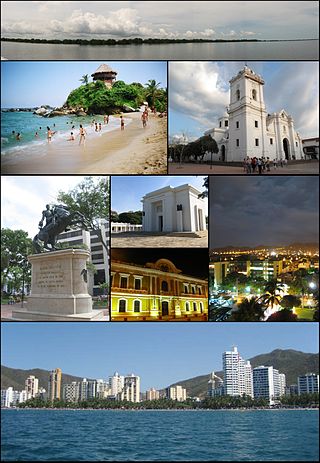
Santa Marta, officially the Distrito Turístico, Cultural e Histórico de Santa Marta, is a port city on the coast of the Caribbean Sea in northern Colombia. It is the capital of Magdalena Department and the fourth-largest urban city of the Caribbean Region of Colombia, after Barranquilla, Cartagena, and Soledad. Founded on July 29, 1525, by the Spanish conqueror Rodrigo de Bastidas, it was one of the first Spanish settlements in Colombia, its oldest surviving city, and second oldest in South America. This city is situated on a bay by the same name and as such, it is a prime tourist destination in the Caribbean region.

Ibagué is the capital of Tolima, one of the 32 departments that make up the Republic of Colombia. The city is located in the center of the country, on the central mountain range of the Colombian Andes, near Nevado del Tolima. It is one of the most populous cities in the country, with a population of 492,554, making it the eleventh most populous in Colombia, and with a population of 529,625 in the municipality. It was founded on 14 October 1550, by the Spanish captain Andrés López de Galarza. The city of Ibagué is divided into 13 communes and the rural area has 17 corregimientos. As the capital of the department of Tolima the city hosts the Government of Tolima, the Departmental Assembly, and the Attorney General's Office. It is the main epicenter of political, economic, administrative, business, art, culture, and tourism activities in the area.
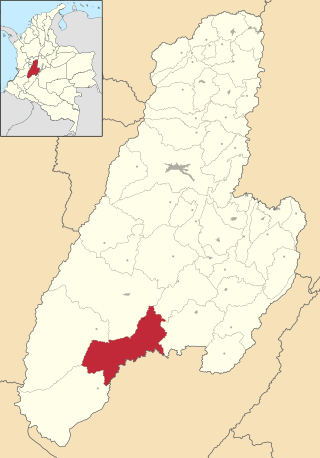
Ataco is a town and municipality located in the Tolima department of Colombia. The population of the municipality was 13,470 in the 2018 census.
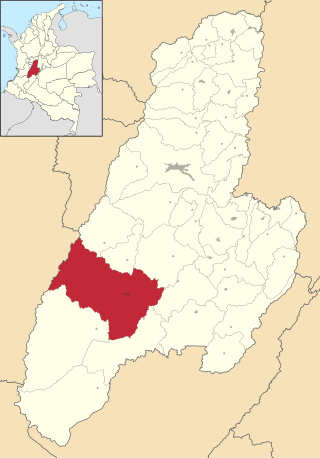
Chaparral is a town and municipality in the Tolima department of Colombia.

Villahermosa is a town and municipality in the Tolima department of Colombia. The population of the municipality was 12,574 as of the 1993 census. The municipality is also one of the most important coffee producers of Tolima's north.
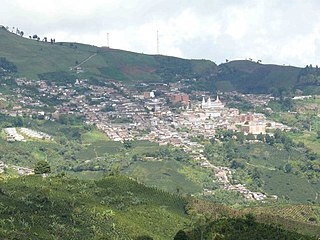
Concordia is a town and municipality in the Colombian department of Antioquia. It is part of the sub-region of Southwestern Antioquia.

Piendamó is a municipality in the department of Cauca in southwestern Colombia.
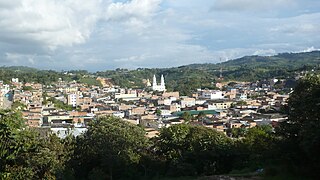
Lebrija is a town and municipality in the Santander Department in northeastern Colombia.

Palestina is a town in the south central region of the state of Caldas, Colombia. Located in the Triangle of Coffee Area, with a culture and tradition related to the colonization of Antioquia and the coffee growing. Because of this, the historic center of the town and surrounding rural areas were named part of the "Coffee Cultural Landscape" UNESCO World Heritage Site in 2011.
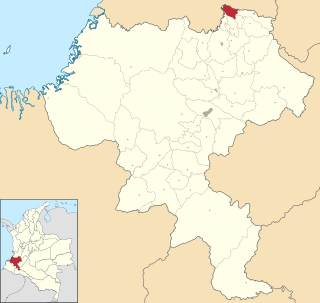
Puerto Tejada is a town and municipality in the Cauca Department, Colombia.

Alcalá is a town and municipality located in the Department of Valle del Cauca, Colombia.
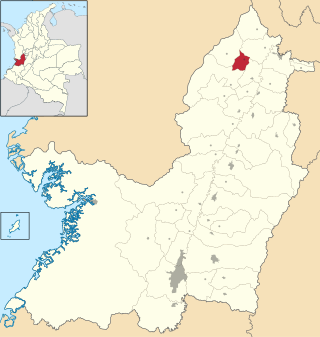
Argelia is a town and municipality located in the Department of Valle del Cauca, Colombia. The main means of income for this region is coffee.

Bugalagrande is a town and municipality located in the Department of Valle del Cauca, Colombia.
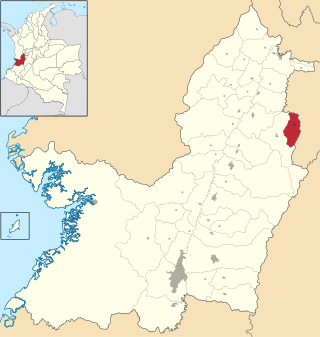
Caicedonia is a town and municipality located in the Department of Valle del Cauca, Colombia, situated about 172 km from the capital Cali. Founded in 1910 by Daniel Gutierrez, Juan Bautista Angely and a group of settlers from Antioquia, Caldas, and Tolima, it was named after Lisandro Caicedo and became a municipality in 1923. Mostly mountainous, its economy is based on agriculture and commerce, its main exports are corn, coffee, sugarcane and bananas. Given its location on the border with the Quindío Department, only 35 km from that department's capital, Armenia, Caicedonia belongs ethnographically and culturally to the Paisa region.

El Cairo is a town and municipality located in the Department of Valle del Cauca, Colombia.

Florida is a town and municipality located in the Department of Valle del Cauca, Colombia.
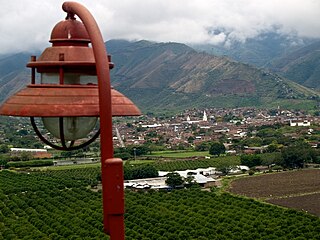
La Unión is a town and municipality located in the Department of Valle del Cauca, Colombia. The town, home to Casa Grajales, the country’s largest wine producer, is known for its grapes.
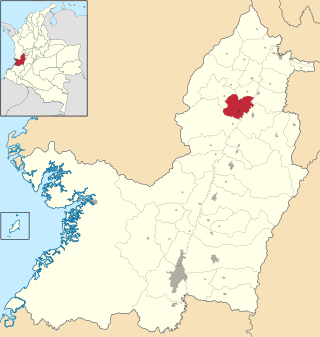
Roldanillo is a town and municipality located in the Department of Valle del Cauca, Colombia.

Trujillo is a town and municipality located in the Department of Valle del Cauca, Colombia.
Bajo Calima is a village in Buenaventura Municipality, Valle del Cauca Department in Colombia.






















